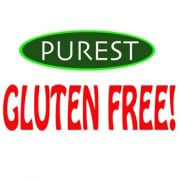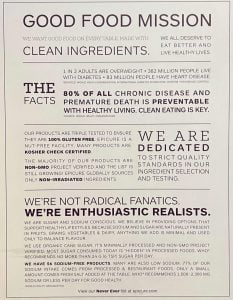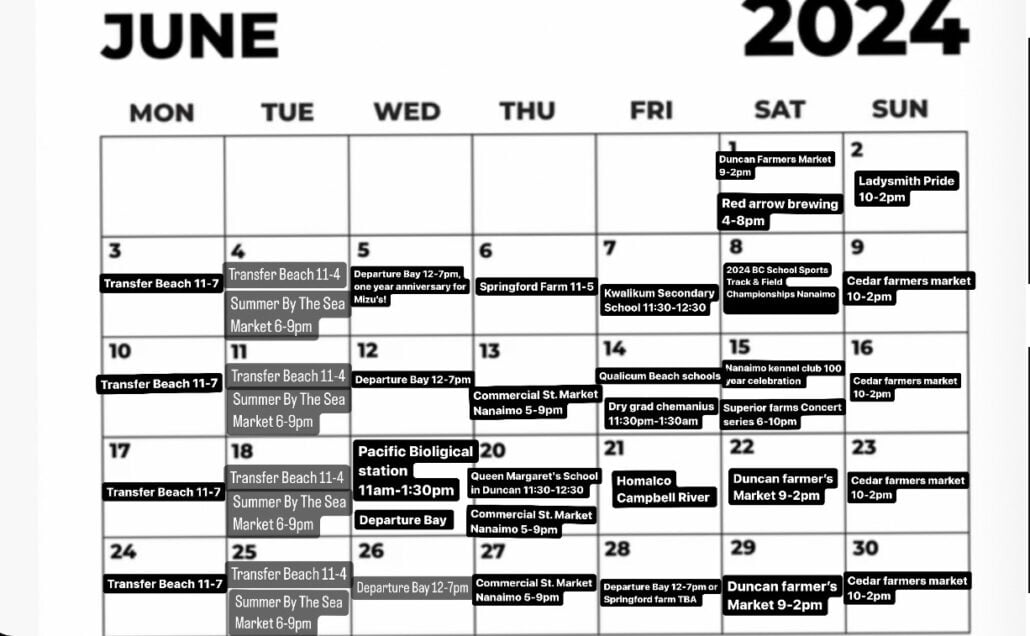Selena De Vries, RD Answers Community Question – Celiac, Food Allergies, and Fatigue? – Part Two

Selena De Vries, RD
About Selena De Vries, RD
- Selena is a Registered Dietitian living with celiac disease who helps individuals that struggle with digestion find food freedom. At Healthbean Nutrition, Selena understands that celiac disease not only effects our physical health but also effects our emotional health. As such, Selena uses an integrative approach in the management of digestive health conditions. She offers free group support for those with celiac disease/gluten sensitivity as well as offering nutrition coaching for digestive health conditions. Services are offered both online and in the beautiful Okanagan valley.
Congratulations to Selena for her new posting as Director (BC), Canadian Celiac Association (CCA.) She brings with her more than 4 years experience in the medical field as a Registered Dietitian and hopes to put her excellent fundraising skills to use. Thank you, Selena for stepping up to volunteer with the CCA – the national voice for people who are adversely affected by gluten!
 This is such a common question and I wish I had an easy answer, but I don’t. To get to the bottom of the problem, experimentation and patience is so, so key.
This is such a common question and I wish I had an easy answer, but I don’t. To get to the bottom of the problem, experimentation and patience is so, so key.
Before we get into potential elimination diets, it is best to re-read part one, which you can access by clicking here.
I think point #4 is commonly overlooked and is one of the most common nutritional issues I see that pop in client food diaries. Sometimes, individuals jump feet first into an elimination diet and tend to think it must be another food that is causing the grief, without taking the time to, honestly, assess the health and nutrition of their current dietary patterns.
That and point #2 is also a very, very common reason why celiacs do not feel better. So, focusing on the strategies presented in part one of this two part series is an extremely good starting point for anyone that is still experiencing digestive health complaints.
Whenever you continually feel unwell (especially when you already have a celiac diagnosis), it is ALWAYS important to go back to your health care provider to ensure that there are not more serious issues going on. Hopefully, you have a good care team on your side, including a GP and gastroenterologist.
Starting an elimination diet requires professional expert dietitian support. They can be highly restrictive in nature and can potentially end up making you feel worse energy wise, so, if you are considering it, I highly suggest embarking on one with a knowledgable health professional in your back pocket. Here are common elimination diets that may be helpful when still not feeling well on a strict, gluten free diet.
Common elimination diets to consider when you also have a celiac diagnosis:
1. The low FODMAP diet: Irritable bowel syndrome (IBS) is a common condition that can coincide with celiac disease. Diagnosis of IBS follow what is called the Rome III criteria which includes the following:
Recurrent abdominal pain or discomfort, 3 days per month in the last 3 months (12 weeks), associated with ≥2 of the criteria below. The criteria are fulfilled with symptoms onset 6 months prior to diagnosis.
- Improvement with defecation
- Onset associated with a change in stool frequency
- Onset associated with a change in stool form (appearance)
If you meet the criteria above, the low FODMAP diet may improve your digestive health as it has been studied extensively within the IBS population. It is very important to enlist a dietitian specializing in this diet to support you as you go through it as it can be quite restrictive, difficult to manage nutritionally, and labor intensive. Most importantly, this is NOT a long-term diet!! I repeat, this is not a long term diet!
This is a short term exclusion diet, anywhere from 2-6 weeks on average. Following this diet long term can have negative implications on your good gut bacteria as it cuts out many health promoting foods. You must embark on the reintroduction phase to identify your specific food sensitivities, improve your good gut bacteria over the long term, and, most importantly, improve your quality of life and nutrition by increasing the variety of food in your diet.
2. Food intolerance – Lactose free diet: A food intolerance is when you lack a specific enzyme to break down a food component. A common example is lactose intolerance. This is common in celiac disease as the damaged villi in celiac disease are what make the enzyme ‘lactase’ which is used to digest lactose.
If you are newly diagnosed with celiac, the damaged villi due to celiac disease may result in inadequate production of lactase and it can result in lactose intolerance. Overtime, as the villi heal on a strict gluten free diet, it is common to be able to digest lactose again. However, at the onset of your diagnosis, a lactose free diet (in addition to the gluten free diet) may be needed.
Symptoms of a lactose intolerance include gurgly stomach, bloat, gas, abdominal pain, diarrhea, nausea and sometimes vomiting. Typically, symptoms show up anywhere from 30 min-2 hours after eating lactose containing foods.
Lactose intolerance is not synonymous with a dairy intolerance. Those with lactose intolerance can still have dairy, but they must be mindful to choose products that are ‘lactose free’ or ‘lactose reduced.’ There are many lactose free foods on the market such as lactose free yogurt that be substituted for regular yogurt. In addition, all hard cheese is naturally very low in lactose and is appropriate for a lactose free diet.
3. Low Fructose Diet:
It is somewhat common for celiacs to have problems digesting fructose (called fructose malabsorption) and may benefit from a low fructose diet.
The low FODMAP diet would address a low fructose diet because fructose is part of the ‘fodmap’ gang. However, if you are not quite ready for a full, low FODMAP diet, you may be able to just start with a low fructose elimination diet to see if your symptoms improve. You would follow the low fructose diet for 4-6 weeks and then embark on the challenge phase.
Symptoms of a fructose malabsorption may include bloating, gas, cramping, diarrhea, fatigue, headaches, brain fog, mood changes and constipation.
4. Food Allergies:
Food allergies are very easy to pinpoint because they are consistent every time you eat the food and always show up within 30 minutes to 2 hours after eating the food culprit. Completing a food diary for 2-4 weeks should pinpoint the potential food culprit.
A food allergy is an immune response to the protein in the food. For example, if it was a dairy allergy, the immune system would be reacting to casein, the protein found in all milk products.
Common symptoms of a food allergy are wheezing or breathing difficulties, vomiting, diarrhea, skin rashes or hives.
The most common food allergens include:
- Peanuts
- Tree Nuts (e.g., walnuts, almonds, hazelnuts, cashews)
- Milk
- Eggs
- Fish
- Shellfish (e.g., shrimp, crab, lobster, mussels)
- Soy
- Sesame Seeds
- Wheat
- Mustard
It is important to note that food allergies are much more rare in those with celiac disease and not as common as food sensitivities.
5. Food Sensitivities – Top 8 Elimination Diet:
This is, by far, the trickiest ones to pinpoint. Food sensitivities are different from food allergies. They can show up anytime after ingesting the potential culprit food, typically up to 72 hours after. They also tend to be dose dependent. So, a little bit of the food may not be bothersome, but 2-3 servings of the food may cause symptoms. Although not impossible, it is very difficult to pinpoint food sensitivities on a food journal. If you think you may be dealing with food sensitivities, enlist the help of an expert digestive health dietitian.
Common food sensitivities symptoms can effect the whole body and include bloat, gas, abdominal pain, constipation, diarrhea, migraines/headaches, consistent fatigue, consistent low energy.
There are various forms of the top eight elimination diet. However, they typically include avoiding:
- Wheat and/or Gluten (gluten should already be gone if you’re celiac!)
- Egg
- Soy
- Peanut
- Dairy/Milk
- Shellfish
- Tree nuts
- Fish
- Optional: caffeine/alcohol
By working with a dietitian, she/he may alter the elimination diet to be suited to your lifestyle, motivation to change, medical history and preferences. For example, as a starting point, you may only remove dairy in addition to gluten and see if that is enough to get you back on the road to wellness.
6. Modified Paleo:
This is a diet that I came up with in practice as a beginner strategy to improve digestive health in those with celiac disease. This would be a potential next step for an individual after consistently following step #4 in part one, but still feeling minor digestive complaints.
Individuals who may benefit from this diet may be those who are not ready to embark on a full elimination diet, or who have mild symptoms but still not feeling 100 percent despite following step #4 in part one. They are ready to make minor adjustments to their already gluten free diet. Their symptoms would not be classified as significant or having a significant impact on your day to day life.
Modified Paleo includes:
- Plain yogurt or kefir as the only dairy choice.
- No more than one serving beans/legumes per day. Sprouted lentils being a preferred choice.
- No more than one serving GF whole grains per day.
- No servings of purchased and pre-packaged GF food products. This means, for a limited time, purchased and pre-packaged GF bread/cereals/bars/baked goods are not consumed.
- Limited added sugars (take home point – no/limited intake of ‘paleo’ desserts)
- Small amount of whole nuts/seeds with nut/seed butters being the preferred choice.
- Majority of intake comes from lean proteins (fish, wild game, and poultry) and easy to digest fresh fruit and vegetables
- Liberal intake of water and herbal teas including peppermint, ginger, fennel, slippery elm, dandelion root, nettle and marshmallow root.
Living in the Okanagan or anywhere in British Columbia? View Selena’s services or book an appointment!
- Contact Selena for in-person or on-line support
- HealthBean.ca • Facebook • Twitter • Instagram • Pinterest • Videos • Blog
- [email protected] • 1-778-990-6047
Testimonial
- “I contacted Selena when I still wasn’t feeling well a year after my celiac diagnosis. I’d read so much on the Internet I thought I knew everything I needed to know. I was wrong.
- Selena has important advice on how to do GF properly (it’s not as straightforward as I thought) and for regaining your health. She is organized, punctual, and professional. And she has celiac disease herself , so she gets it.
- I think a lot of us, by the time we’re diagnosed, have had more than our share of health care practitioners and may not want to bother with a dietitian.
- Selena played a crucial role in my recovery, and I would highly recommend her, whether you’re newly diagnosed or just trying to feel better.”
- ~ Charlene (long-distance celiac disease client)
- HEALTHBEAN NUTRITION specializes in digestive health. We deliver easy to digest, bite-size pieces of information so our clients can, finally, achieve the healthy & happy digestive system they’ve been striving for. Learn more ...
- HEALTHBEAN PHILOSOPHY– Selena employs elimination diets and/or a specific diets in accordance with her clients’ conditions, and only when deemed necessary. She reserves advice about the gluten-free diet for those who require it – not those choosing to follow the diet as a lifestyle choice. Expect clear, concise instructions on the appropriate diet for you and, maybe even some myth busting! Learn more …
Selena knows first-hand how her undiagnosed celiac disease affected her physical and emotional health. After telling her that, “Well, you have celiac disease,” her MD suggested she, “google the diet,” and out the door she went. Sound familiar?
That’s why Selena established Healthbean Nutrition. She is dedicating her education, personal insights and her own recovery to helping her fellow celiacs make this enormous lifestyle transition – and find joy in eating again! Learn more …
Selena’s Road to Diagnosis
- “When I was going through university, I was exhausted, ALL the time. I had to drag myself out to hang out with friends, and if I had it my way I would have spent most days in bed sleeping. It was not unknown for me to sleep 12-16 hours a day. Call me crazy, but I related it all to the busy-ness of school. I was even checked for anemia at one point (common with celiacs) and I was ‘fine.’
- The symptoms continued through school and the brain fog was undeniable. I distinctly remember during my dietetic internship (like a medical residency except everything is nutrition based) at Kelowna General Hospital sitting in the office, charting on a patient and, literally, feeling like my brain was so fuzzy that I could barely keep my eyes from nodding off. It was awful.
- Another thing I didn’t pay much attention to, was bowels. I was always constipated. Never the other way around. Never. And, I also remember mentioning this to my gastroenterologist just before the endoscopy and he said ‘oh, well with your very low antibody levels and constipation, there is a very low chance that you are actually celiac but we will proceed with the endoscopy since you’re prepped and ready to go.’
- The piece of paper I received after the endoscopy said to follow up with my GP. I did follow up with my GP and the report came back positive for celiac disease. My GP said “well, you’re celiac. But, you’re a dietitian, right, so this should be easy for you!”
- Perhaps I had a leg up in the nutrition part of it, but I think we all know that the gluten free diet is not a walk in the park. And, although, I am so appreciative of the medical care I received, it did open my eyes to the lack of knowledge within the medical community when it came to celiac disease and the lack of support offered to individuals with celiac disease.
That’s how Healthbean Nutrition was born!
Leave a comment at the bottom of the page.
- *Information and perspectives posted on The Celiac Scene are intended to provide general information, without independent verification on the part of The Celiac Scene for the accuracy of the information provided to it. The information is specifically not intended to be a substitute for medical diagnosis or treatment by your physician or other health care professional. Always consult your own physician or other health care professionals about any medical questions, diagnosis, or treatment, especially before trying any diet. Healthbean Nutrition does not accept any liability for any injury, loss or damage incurred by use of or reliance on any content contained herein.
















